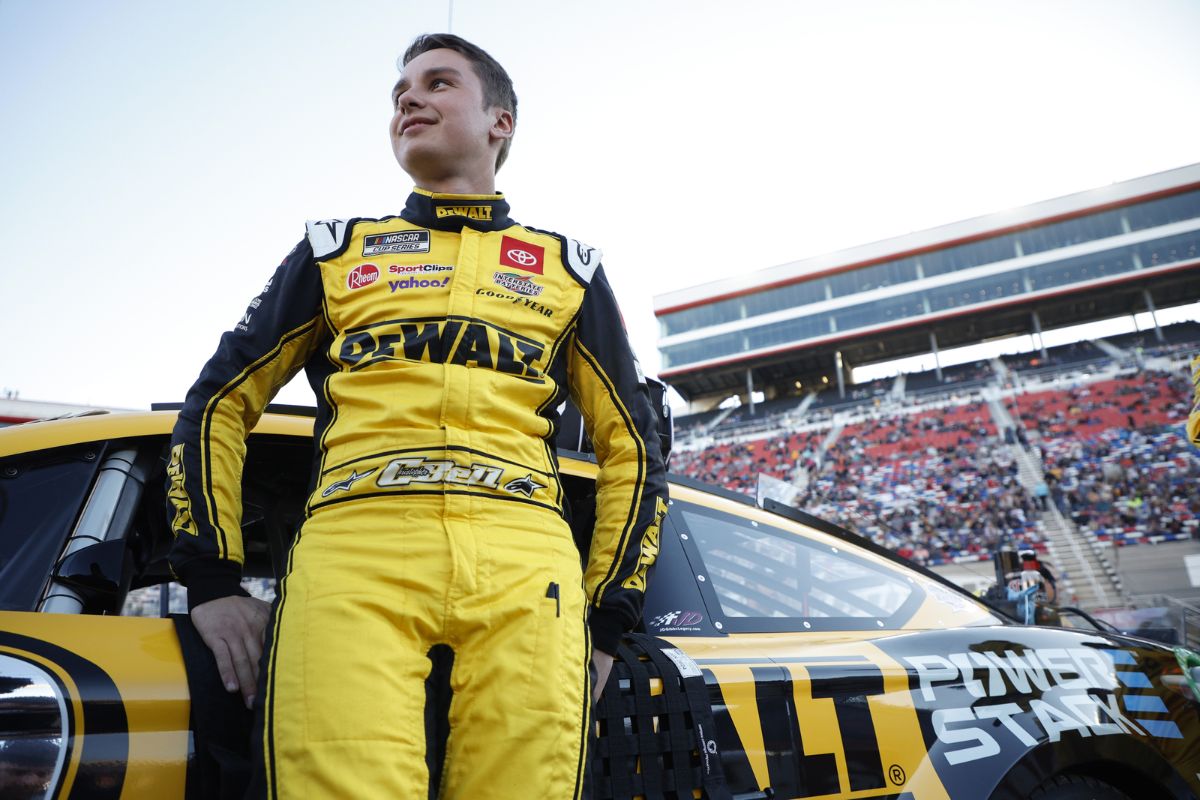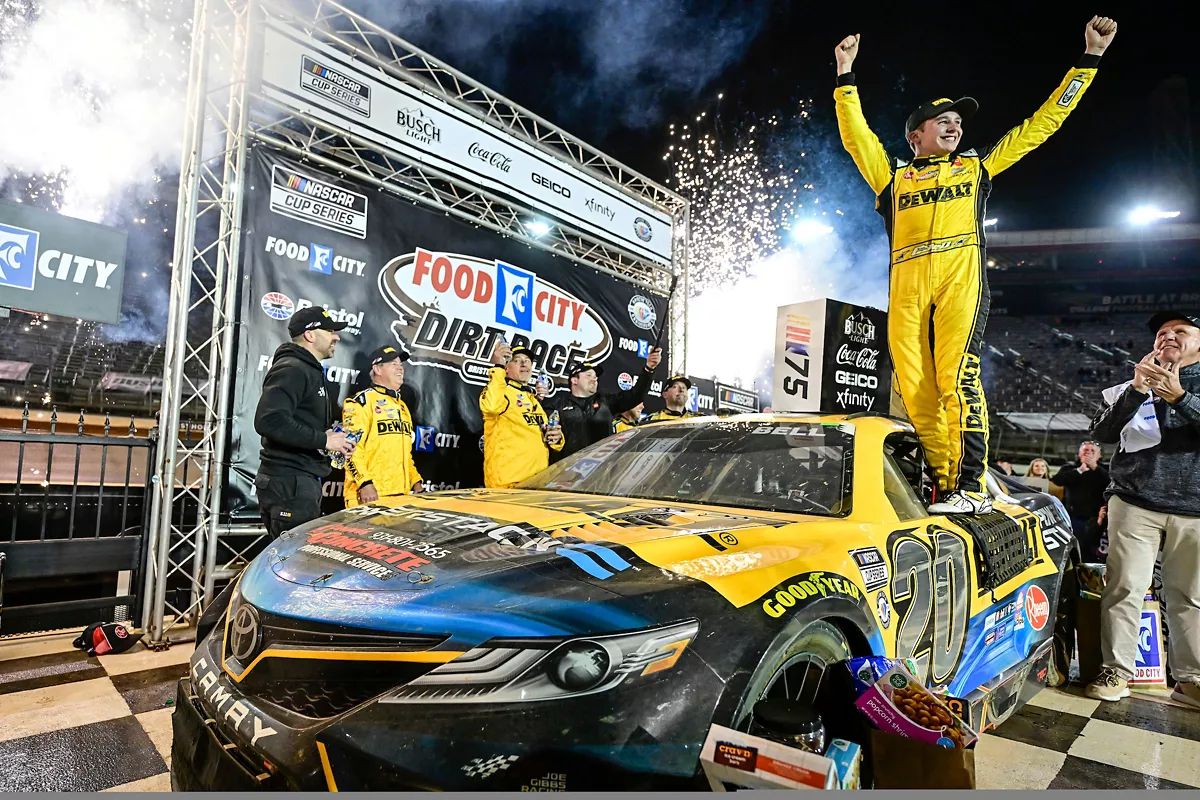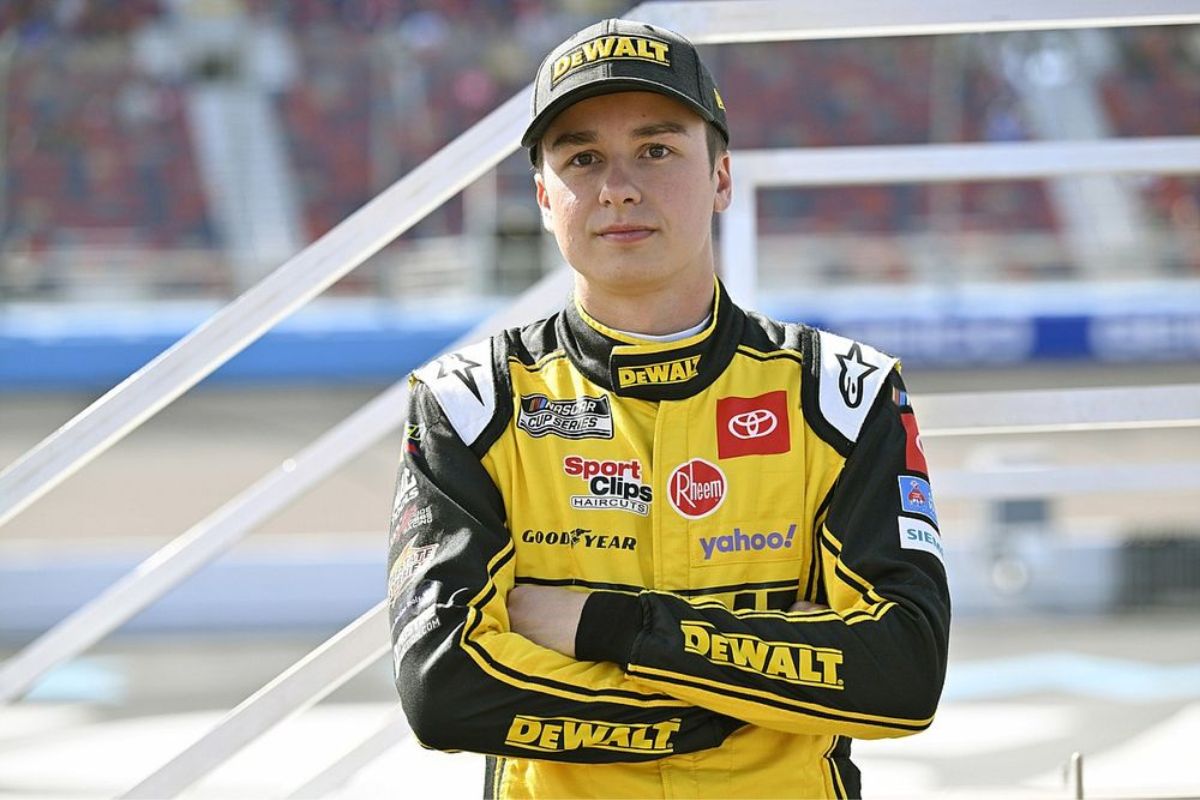Christopher Bell Stirs Debate: Christopher Bell’s comparison of Bristol and Daytona races sparked controversy. Bell highlighted issues with tire wear at Bristol, prompting discussions on improving short track races. His critique sheds light on the challenges faced by drivers and the impact of track surfaces. Daytona’s dynamics contrast sharply with Bristol, raising questions about race quality. Bell’s insight into these differences adds depth to the debate within NASCAR.
Key Takeaways
- Christopher Bell criticized Bristol race quality compared to Daytona.
- Bell highlighted issues with tire wear at Bristol.
- Bell’s critique sparks discussions on improving short track races.
- Bell’s disappointment reflects challenges for young drivers in NASCAR.
- Bell’s skepticism on track limits at COTA raises concerns.
Bristol Motor Speedway Tire Disaster
The unfortunate tire wear challenges faced by drivers at Bristol Motor Speedway during the recent NASCAR Cup Series race prompted intense scrutiny and debate among fans and experts. The return to a concrete surface at Bristol after three years led to one of the most thrilling races at the venue but also brought to light the significant issue of severe tire wear. This issue added complexity to the race, forcing drivers to adapt their strategies and driving styles to cope with the demanding conditions.
The severe tire wear at Bristol Motor Speedway not only tested the drivers’ skill and adaptability but also showcased the importance of tire management in NASCAR racing. The high banks and concrete surface of Bristol put immense strain on the tires, leading to rapid degradation and creating a challenging environment for the competitors. As a result, fans witnessed a race where tire conservation played a critical role in determining the outcome, adding unpredictability to the event.
The tire wears at Bristol sparked discussions among fans and experts about the impact of track surfaces on racing dynamics and raised questions about the role of tire suppliers in providing suitable compounds for different track configurations. The intense scrutiny surrounding the tire wear issue highlighted the intricate balance between performance and durability in NASCAR racing, emphasizing the need for continuous development and innovation in tire technology to meet the demands of evolving race conditions.

Christopher Bell’s Critique
Christopher Bell’s evaluation of the recent NASCAR Cup Series race at Bristol Motor Speedway and its comparison to the Daytona 500 highlights significant concerns within the racing community. Bell, a JGR driver star, expressed dissatisfaction with the quality of racing at Bristol, particularly emphasizing the issues surrounding tire wear. By drawing parallels between the Bristol race and the Daytona 500, Bell shed light on what he perceives as negative aspects of both events.
| Aspect | Bristol Motor Speedway | Daytona 500 |
|---|---|---|
| Track Surface | Concrete surface led to excessive tire wear | Daytona’s asphalt surface provided better tire management |
| Racing Style | Close-quarters racing but ruined by tire issues | Drafting critical, but handling less of an issue |
| Driver Feedback | Drivers vocal about tire wear impacting competition | Mixed reviews on pack racing vs. single-file racing |
Bell’s critique serves as a catalyst for discussions within the racing community about how NASCAR can improve the quality of races at short tracks like Bristol. The comparison to the Daytona 500 shows the need for a balance between intense competition and ensuring that races are not overly influenced by tire wear. As drivers and teams look towards future races, Bell’s insights provide valuable perspectives for NASCAR to take into account in enhancing the on-track product.
“I mean, I don’t know; I’m perplexed about Bristol and I think everybody is. You know there were a lot of positives that came out of it and there were also some negatives that came out of it. I think there was a lot of negativity around Daytona and the fuel savings that transpired there, well Bristol was the exact same thing.” – (Christopher Bell)
Bell’s Disappointment and Skepticism
Bell’s critical assessment of the recent NASCAR Cup Series race at Bristol Motor Speedway extends to his disappointment and skepticism regarding the handling of tire wear issues, particularly noting the challenges faced by younger drivers in maneuvering this aspect of the competition. While experienced drivers were able to navigate the tire wear throughout the race, Bell expressed his concern over the struggles younger drivers faced in finding the right balance. His disappointment with the handling of the tire issue at Bristol was evident as he emphasized the necessity for drivers to adopt specific strategies to cope with the changing conditions in both the Bristol and upcoming COTA races.
As the race progressed, it became clear that while the seasoned veterans skillfully managed tire wear, the young guns struggled to find their groove and strike the right balance. While Christopher Bell’s teammate, Denny Hamlin, celebrated his maiden win, Martin Truex Jr. and Brad Keselowski also showcased their prowess by clinching top-five finishes. Despite crossing the line in 10th place, Bell couldn’t shake off the feeling that the race fell short of his expectations. The No. 20 JGR driver’s performance left him pondering whether the day could be thought as a success or not.
The disparity in how veteran and younger drivers coped with tire wear highlights a broader issue within NASCAR regarding the development and support of emerging talents. Bell’s skepticism towards the management of tire wear not only sheds light on the technical aspects of racing but also shows the need for a more pivotal playing field where all drivers, regardless of experience, can compete on equal footing. As NASCAR continues to evolve, addressing these challenges will be fundamental in ensuring the growth and competitiveness of the sport for both seasoned professionals and aspiring newcomers.
“Nobody is pushing their car at all, and it was a complete ride-around session for 500 laps, and yeah, it showed great on TV, but I mean, it was the exact same thing as the Daytona 500, like we were all side by side running half throttle at Daytona too.” – (Christopher Bell)
Phoenix 🏁 🏆- only the beginning 👊🏼 #teamtoyota pic.twitter.com/YTltpb6aI1
— Christopher Bell (@CBellRacing) March 11, 2024
Track Limits at COTA
Expressing his reservations about the rule change at the Circuit of The Americas, Christopher Bell shared his skepticism regarding the track limits for the upcoming race. The recent controversy during the Xfinity Series race, where Shane van Gisbergen was penalized for cutting the racetrack in the final laps of overtime, has brought the issue of track limits at COTA into the spotlight. A 30-second penalty resulted in his decline from the second spot to the 27th position. Bell’s concerns add to the ongoing debate about the enforcement of track limits in motorsport.
To provide a clearer perspective on the track limits at COTA, let’s examine the following table:
| Track Limits at COTA | Pros |
|---|---|
| Clearly Defined | Helps maintain fairness in racing |
| Safety | Prevents drivers from taking risky shortcuts |
| Consistency | Ensures a level playing field |
| Spectacle | Enhances the viewing experience |
| Enforcement | Upholds the integrity of the sport |
The table highlights the importance of well-defined track limits at COTA, emphasizing the benefits they bring to the sport. While some may argue for more leniency, especially in high-pressure situations like close finishes, maintaining consistent and clear track limits is essential for the overall fairness and safety of racing events. Bell’s skepticism sheds light on the need for a balanced approach that considers both competitiveness and integrity in motorsports.
“I don’t love it, man. I wish that they would put the curbs down there or a wall just where it’s black and white, and it would eliminate the judgment call. Because, especially through the S’s, there’s a ton of lap time to be gained by pushing the issue. Reddick was the guy last year who was super aggressive through there and made it work. He never got busted for track limits. It’s going to force all of our hands to do that, and the guy who is the most aggressive is that guy that gets through the passes.” – (Christopher Bell)

Bell’s Performance at COTA
Amidst high expectations and a promising starting position, Christopher Bell’s performance at the Circuit of The Americas is keenly anticipated for its potential impact on today’s race outcome. Starting in 4th place at COTA alongside Tyler Reddick, Bell finds himself in a favorable position to compete for a top spot. Bell’s proficiency on road courses, demonstrated by his past successes, adds to the anticipation surrounding his performance at this challenging track.
Bell’s adaptability and skill behind the wheel have been evident in previous races, showcasing his ability to navigate technical circuits efficiently. The Circuit of The Americas presents a unique set of challenges with its elevation changes, diverse turns, and long straights, requiring drivers to exhibit a mix of precision and speed. Bell’s experience in various racing formats, including dirt track racing and NASCAR, equips him with a diverse skill set that could prove advantageous at COTA.
As the race begins, Bell’s strategic decisions and on-track performance will be closely monitored, with fans and analysts evaluating his chances of clinching a victory. The outcome of today’s race at COTA could notably impact Bell’s standing in the NASCAR community and shape the narrative surrounding his capabilities as a driver. With the spotlight firmly on him, Bell has the opportunity to solidify his reputation as a formidable contender on road courses.
News in Brief
Christopher Bell’s recent comments about the differences between Bristol and Daytona have sparked debate among fans and experts. While his critique of Bristol’s tire issues and skepticism towards the track’s future are valid concerns, his performance at COTA showcased his talent and adaptability as a driver.
As the NASCAR season progresses, it will be interesting to see how Bell’s opinions and performances continue to shape the conversation around track conditions and driver skill.
Our Reader’s Queries
Q: What happened to Christopher Bell at Phoenix Raceway?
A: Bell faced a similar fate in Phoenix for the second consecutive year. At the season finale, he battled among the final four drivers contending for the NASCAR championship. However, his aspirations were dashed by a broken brake rotor, forcing him out of the race prematurely.
Q: Who is the owner of Phoenix Raceway?
A: Phoenix Raceway, presently under NASCAR ownership and management, hosts two annual NASCAR race weekends, joining a select group of 13 facilities on the NASCAR schedule that host more than one race weekend per year.
Q: Who does Christopher Bell drive for?
A: Christopher Bell pilots the No. 20 Toyota for Joe Gibbs Racing in the NASCAR Cup Series, boasting seven Cup-level victories. His most recent triumph occurred at Phoenix Raceway in March 2024, with his maiden victory achieved at the Daytona International Speedway Road Course in 2021.
Also Read: Christopher Bell Exposes NASCAR Salary Secrets: Shocking Truth Unveiled!


